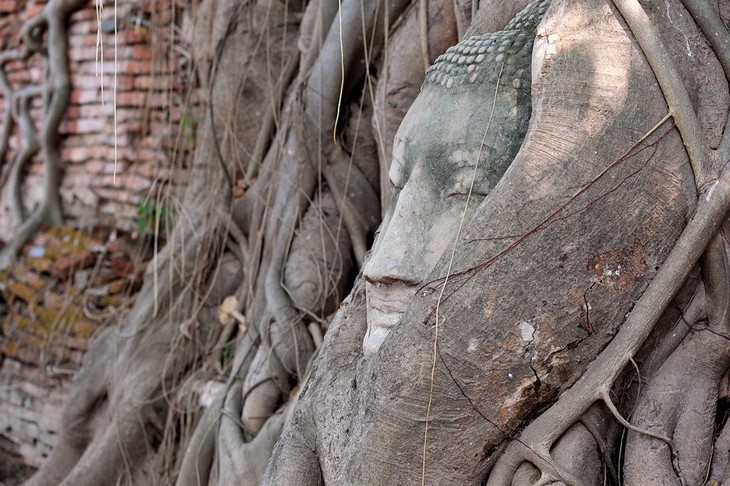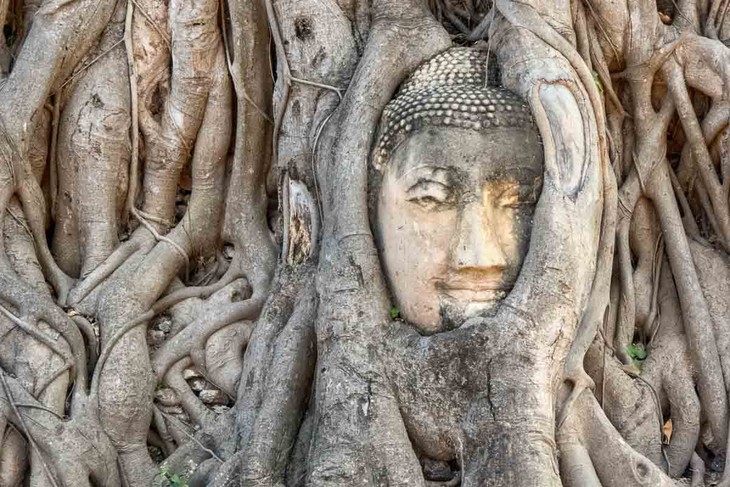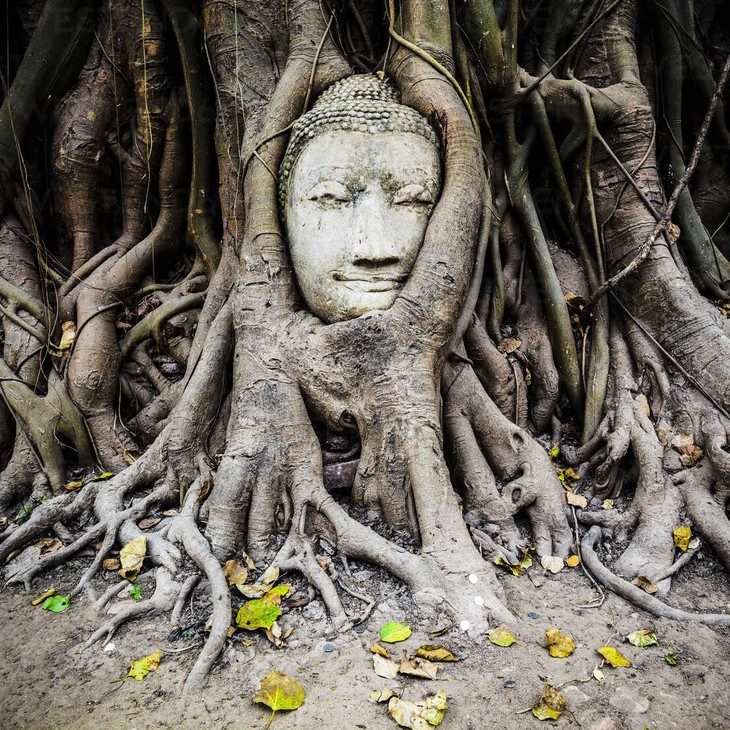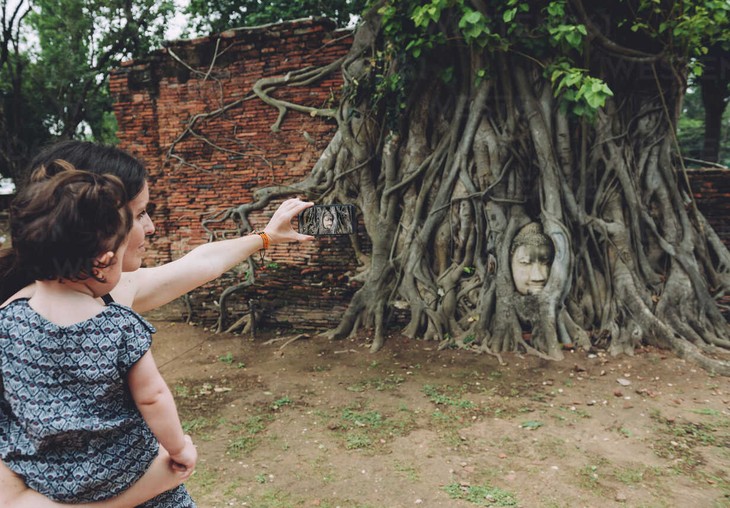 |
| In the 14th century, Wat Phra Mahathat in Thailand’s ancient capital Ayutthaya was a bustling Buddhist monastery. However, today this pagoda area is only a ruin. Photo: Tourism Authority of Thailand. |
 |
| Many centuries ago, during the invasion of the Burmese army, many Buddha statues at Wat Phra Mahathat were beheaded and thrown everywhere. After many years, a tree trunk at the temple grew and hugged one head of the Buddha statue with its roots. Photo: Biblia Global. |
 |
| This has created a unique work of Buddhist art, known all over the world. Photo: Westend61. |
 |
| For Buddhists and tourists, in the midst of a ruined ruin with many headless Buddha statues, the presence of a Buddha statue’s head in a tree trunk exudes a special meaning. Photo: BKK Tours. |
 |
| Perhaps this statue’s head once belonged to a statue of Buddha meditating. The statue’s face exudes the leisurely and carefree demeanor of a person who has shaken off the dust of the world. Photo: BKK Tours. |
 |
| The statue’s head and rough tree roots covering the outside seem to highlight the Buddhist perspective on the impermanence of things. Photo: Expedia. |
 |
| Also thanks to the tree roots covering it, this Buddha statue’s head escaped being stolen and sold abroad by antiquities hunters like many other artifacts in the area. Photo: The Flashpacker. |
 |
| Today, Wat Phra Mahathat is an important building in Thailand’s Ayutthaya Historical Park World Heritage Site. Besides the architectural ruins, the Buddha head in a tree trunk is a special highlight here. Photo: Westend61. |
 |
| According to regulations, tourists when taking souvenir photos next to the statue will have to kneel so that their head is not higher than the statue’s head in the photo taken. This is a way to show respect to Buddha in this country that considers Buddhism as the state religion. Photo: Westend61. |
We invite readers to watch the video: How to do old town tourism in China.




